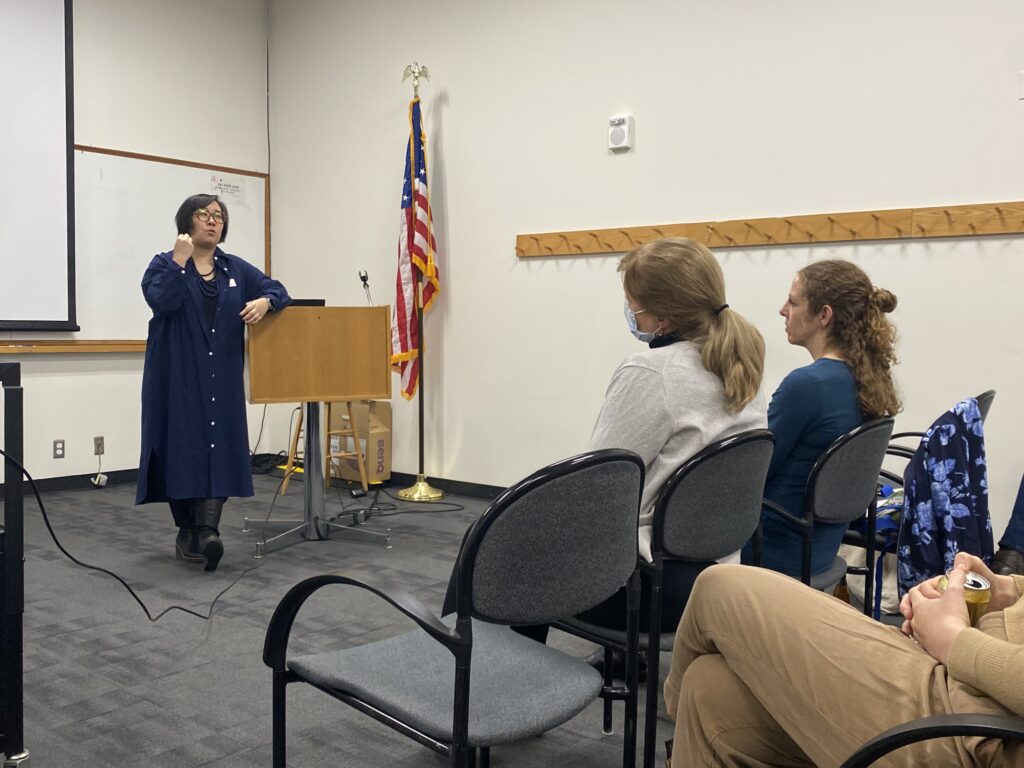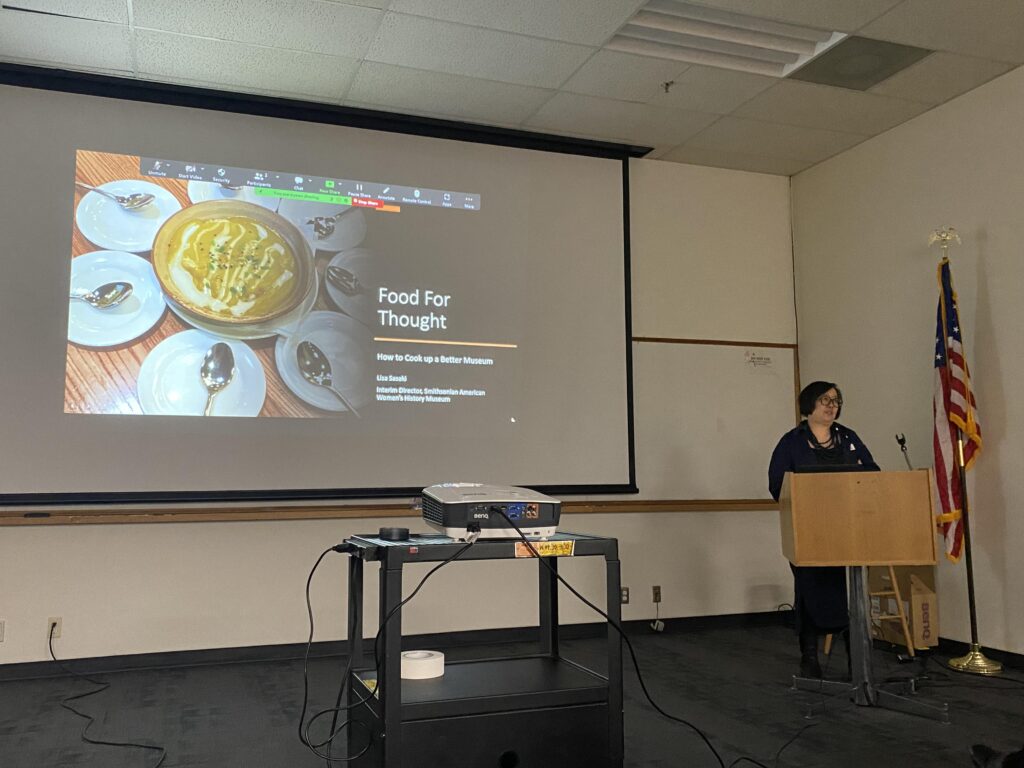“Food For Thought: Building a New Smithsonian Museum”
Speaker: Lisa Sasaki, Interim Director of the Smithsonian American Women’s History Museum
Summarized by Katherine Miromonti
When cooking a hearty meal, it is prudent to choose the best ingredients and plan carefully. A recipe is a helpful starting place, but many of the best chefs go “off-book,” adding their own twists and special touches, making their meals unique and memorable. In her presentation on the development of a new Smithsonian museum, Lisa Sasaki illustrated how cooking up a new museum is a similar process. Having filled the role of director at the Smithsonian’s Anacostia Community Museum, the Smithsonian Asian Pacific American Center and the Smithsonian American Women’s History Museum (SAWHM) and acquiring over 25 years of museum experience, Sasaki is intimately familiar with the internal workings of museums. Nevertheless, the opportunity not only to lead a museum, but to reinvent it from scratch is a unique, but challenging opportunity.


Lisa Sasaki delivers “Food For Thought: Building a New Smithsonian Museum” at the December Meeting of the Washington Conservation Guild.
The idea for the Smithsonian American Women’s History museum began with a statue, a portrait of three important leaders of the American women’s rights movement: Lucretia Mott, Elizabeth Cady Stanton, and Susan B. Anthony. The statue resided in the U.S. Capitol Crypt for over 75 years before it was relocated to the Rotunda in 1997 due to the efforts of several women’s groups and the bipartisan support of women in Congress. The situation brought to light the underrepresentation of women not only on Capitol Hill but in museums and history texts. Sasaki informed attendees that, as of 2021, only about 9% of U.S. public statues and monuments are dedicated to women––a statistic that includes representations of mermaids!
With this problem in mind, women’s groups have spent the past 20 years fighting for a museum dedicated to women’s history on the National Mall. Even so, by the time Sasaki was invited to join the table, the first steps were just barely in motion. The process of building a Smithsonian museum takes decades, a minimum of three acts of Congress, and dozens of considerations. These considerations include choosing a location, analyzing existing site conditions, ensuring transportation access, and considering cost factors. This list does not even include the design of exhibitions and programming, which will need to exceed the challenge of being inclusive, accessible, and engaging. Fortunately, the advisory council is made up of a collection of accomplished women, some prominent names include Tory Burch, Lynda Carter, and Billie Jean King. The careful appointment of each of these women with diverse backgrounds ensures that there is the perfect number of “cooks in the kitchen,” each with their own strengths and specialties.
Sasaki spoke in depth on the council’s task of reinventing the museum, or in other words, “resetting the menu.” To build a strong museum, they must first design a strong foundation. This involves integrating the physical and digital museums and choosing to tell stories that are inclusive and expansive. Sasaki emphasized that the museum must bravely and compassionately present a wide range of viewpoints and lived experiences about what woman, American, history, and museum mean to visitors. As the first Smithsonian museum to address gender, they must plan for change for what gender and gender roles mean to audiences in the coming decades. Additionally, they must look beyond what has already been accomplished by museums and create an institution that is malleable and responsive to current events. Comments and criticisms from the public are an integral part of this museum’s development. The participants of focus groups have already provided insightful feedback, including asking for more matriarchal and women-centered structures and a museum environment that embraces caretaking. This new venture provides the opportunity to celebrate a diverse array of American women and deconstruct and revolutionize museum hierarchies, community engagement, and collection methods.
Sasaki also touched on the role of conservators in the new museums. As stewards of cultural heritage objects, conservators deeply understand the role of caretaking and are integral to the maintenance of collections. SAWHM leaders are working to ensure that conservation and collections issues are addressed early in the process, including paying special attention to the need for labs and workspace, collection storage, and safe exhibition spaces. The planning process also includes consideration of preventative conservation and emergency response procedures as the National Mall sits on a floodplain. The role of the conservator may also evolve with this new museum, as the board explores incorporating more digital projects, rethinking permanent collections, and creating exhibitions that are more people-focused.
There is still much work to be done before the Smithsonian American Women’s History Museum opens. In fact, the process will take about 10 to 12 more years of planning, crowdsourcing, construction, design, and more. However, those taking the lead on this project are already making leaps and bounds of progress by asking for community input and committing to creating a museum that defies the status quo. They recognize that it is not only important to tell the multitudes of stories of American women, but to make the museum experience inclusive, engaging, challenging, reflective, memorable, and fun. The goal is for the museum to, like a good meal, leave visitors fulfilled, satisfied, and looking forward to their next encounter.
If you missed this engaging talk, a recording is available on the WCG YouTube page.